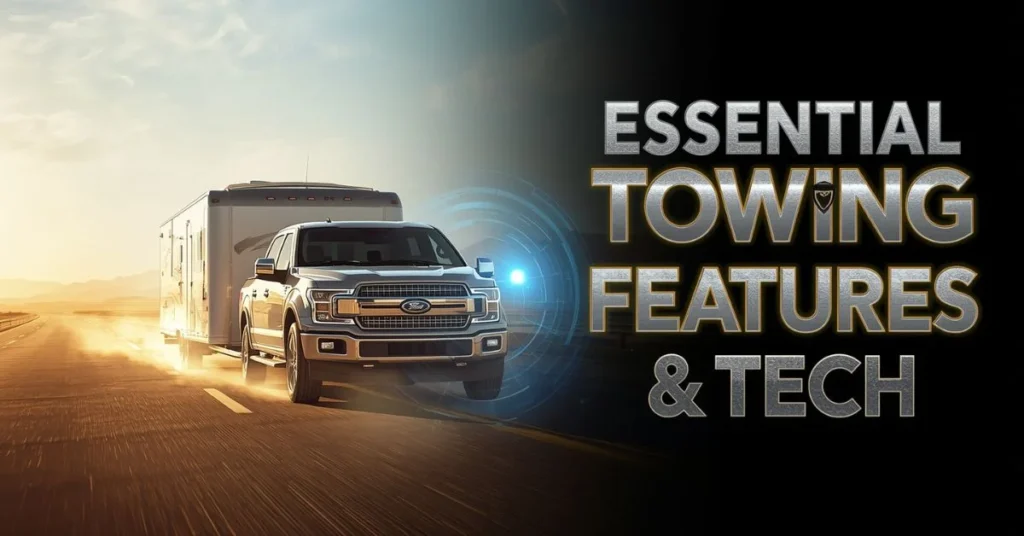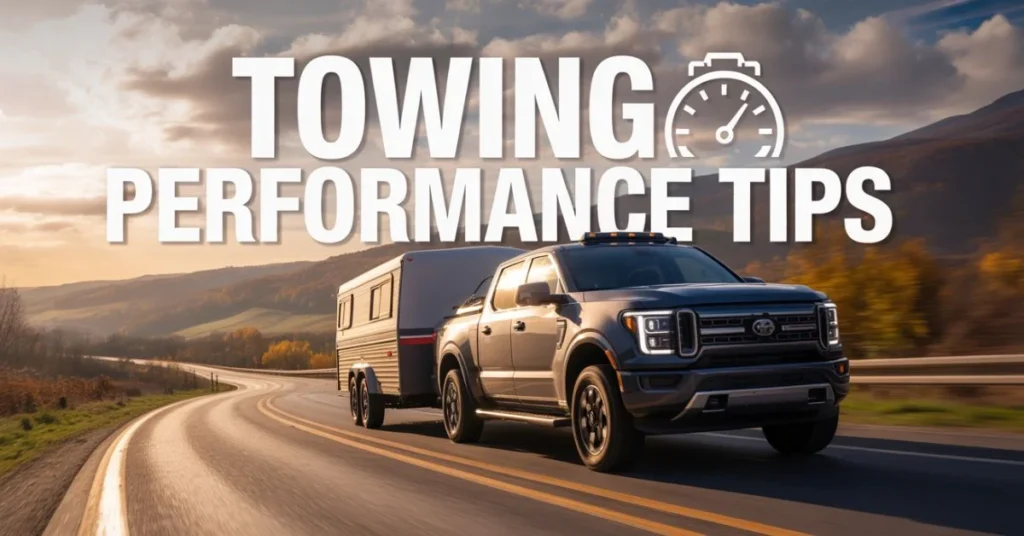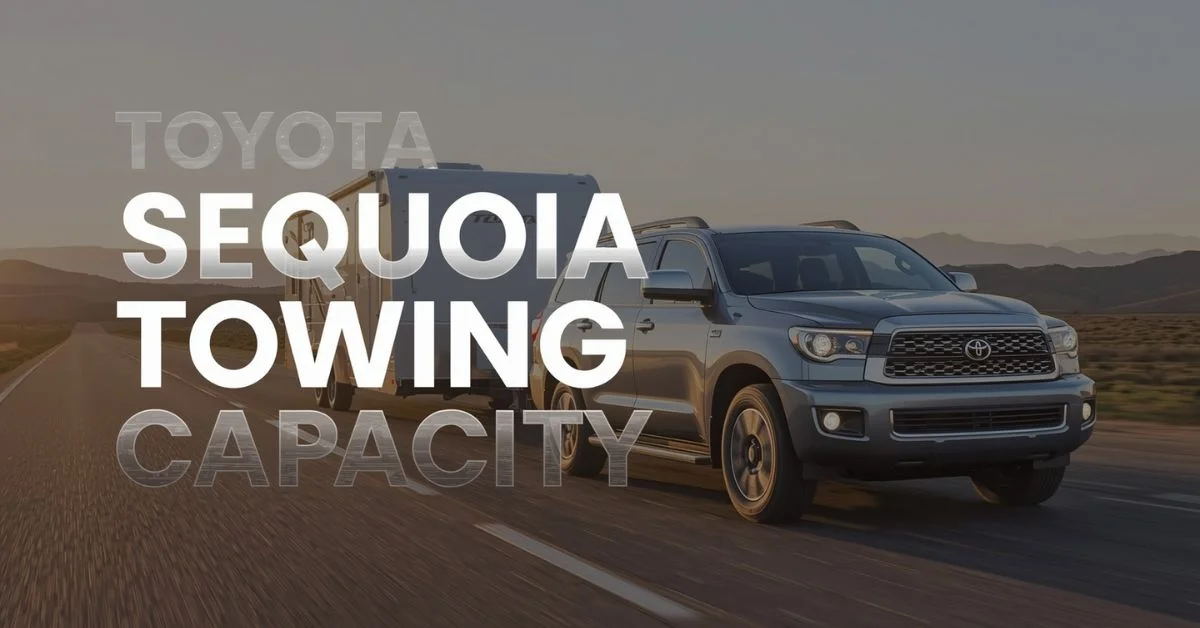When it comes to full-size SUVs that blend family-friendly comfort with serious hauling capability, the Toyota Sequoia stands as a formidable contender. For drivers seeking a vehicle that can effortlessly tow boats, trailers, campers, or heavy equipment without compromising on daily drivability, understanding the Toyota Sequoia towing capacity is essential. This comprehensive guide explores everything you need to know about the Sequoia’s towing prowess, from its impressive maximum ratings to factors that influence real-world performance.

Understanding the Toyota Sequoia’s Towing Capabilities
The Toyota Sequoia has earned its reputation as one of the most capable towing vehicles in the full-size SUV segment. The latest generation Sequoia, introduced for the 2023 model year, represents a significant leap forward in towing technology and power delivery. Built on Toyota’s TNGA-F platform and equipped with a robust twin-turbocharged powertrain, the Sequoia delivers exceptional towing capacity that rivals dedicated pickup trucks.
The Toyota Sequoia towing capacity reaches an impressive maximum of 9,520 pounds when properly equipped. This substantial capability makes it suitable for a wide range of towing applications, from recreational activities to professional hauling needs. However, it’s important to understand that this maximum rating applies only to specific configurations, and several factors determine the actual towing capacity of any particular Sequoia model.
Towing Capacity by Trim Level and Configuration
The Toyota Sequoia’s towing capacity varies depending on the trim level, drivetrain configuration, and optional equipment installed. Here’s a detailed breakdown of what you can expect:
Maximum Towing Specifications
| Trim Level | Drivetrain | Maximum Towing Capacity |
|---|---|---|
| SR5 | 2WD | 9,520 lbs |
| SR5 | 4WD | 9,300 lbs |
| Limited | 2WD | 9,520 lbs |
| Limited | 4WD | 9,300 lbs |
| Platinum | 2WD | 9,010 lbs |
| Platinum | 4WD | 8,980 lbs |
| TRD Pro | 4WD | 8,980 lbs |
| Capstone | 2WD | 9,010 lbs |
| Capstone | 4WD | 8,980 lbs |
As the data reveals, two-wheel-drive configurations generally offer slightly higher towing capacity compared to four-wheel-drive variants due to reduced weight. The SR5 and Limited trims with 2WD achieve the maximum Toyota Sequoia towing capacity of 9,520 pounds, while higher trims with additional luxury features experience modest reductions due to increased vehicle weight.
The Powertrain Behind the Performance
The impressive towing capacity of the modern Sequoia is made possible by its advanced powertrain engineering. All current Sequoia models feature a twin-turbocharged 3.5-liter V6 engine paired with a hybrid electric motor, creating Toyota’s i-FORCE MAX hybrid system. This combination delivers:
- 437 horsepower of combined output
- 583 lb-ft of torque for exceptional pulling power
- 10-speed automatic transmission for smooth power delivery
- Integrated electric motor providing instant low-end torque
The hybrid system’s electric motor assists during acceleration and provides additional torque at lower RPMs, which is particularly beneficial when towing heavy loads. This configuration not only enhances towing performance but also improves fuel efficiency compared to traditional V8 engines found in previous Sequoia generations.
Essential Towing Features and Technology
Toyota has equipped the Sequoia with numerous features specifically designed to enhance towing safety, convenience, and confidence:
Standard Towing Equipment
- Integrated Towing Hitch Receiver: Factory-installed and rated for maximum capacity
- 7-Pin and 4-Pin Connectors: Accommodating various trailer wiring configurations
- Trailer Sway Control (TSC): Automatically applies brakes to individual wheels to counteract trailer sway
- Hill Start Assist Control (HAC): Prevents rollback when starting on inclines with a trailer attached
Available Advanced Towing Technologies
- Trailer Backup Guide: Displays projected path on the rearview camera screen to simplify reversing with a trailer
- Integrated Trailer Brake Controller: Allows adjustment of trailer brake intensity from the dashboard
- Blind Spot Monitor with Trailer Detection: Extends monitoring coverage to account for trailer length
- Multi-Terrain Select: Optimizes traction control settings for various driving conditions while towing
Factors Affecting Your Actual Towing Capacity
While the maximum Toyota Sequoia towing capacity provides an important benchmark, several factors influence the actual weight you can safely tow:
Vehicle Configuration and Weight
- Passengers and their cargo add to your vehicle’s gross weight
- Aftermarket accessories like roof racks, running boards, and upgraded wheels increase curb weight
- Fuel tank capacity affects overall vehicle weight
Trailer Characteristics
- Tongue weight (typically 10-15% of total trailer weight) reduces available payload
- Weight distribution affects handling and stability
- Aerodynamic profile impacts fuel efficiency and performance
Environmental Conditions
- Altitude reduces engine power output due to thinner air
- Temperature extremes can affect engine cooling and performance
- Road grades and terrain significantly impact towing strain
Proper Load Distribution
- Cargo placement within the trailer affects tongue weight
- Balanced loading prevents excessive sway
- Weight distribution hitches can improve stability with heavier loads
Calculating Your Safe Towing Capacity
To determine your specific towing capacity, follow these steps:
- Locate your vehicle’s weight ratings on the driver’s door jamb sticker
- Calculate your payload usage: Add the weight of all passengers, cargo, and accessories
- Determine available capacity: Subtract payload usage from GVWR (Gross Vehicle Weight Rating)
- Account for tongue weight: Remember that 10-15% of trailer weight becomes payload
- Consult your owner’s manual for specific configuration details
Never exceed the lowest of these ratings: maximum towing capacity, GVWR, or rear axle weight rating. Exceeding these limits compromises safety, handling, and can void your warranty.

Tips for Optimal Towing Performance
To maximize your Sequoia’s towing capability while ensuring safety and longevity:
Before Your Trip
- Inspect trailer lights, brakes, and tire pressure
- Verify proper hitch height (trailer should be level when loaded)
- Distribute cargo evenly with 60% of weight toward the front
- Ensure all safety chains are properly crossed and secured
- Check that your trailer brake controller is adjusted correctly
While Towing
- Accelerate gradually to avoid excessive strain on the drivetrain
- Increase following distance to account for longer stopping distances
- Anticipate lane changes and turns well in advance
- Monitor transmission temperature, especially in mountainous terrain
- Use lower gears on steep descents to employ engine braking
Maintenance Considerations
- Follow Toyota’s severe-duty maintenance schedule when towing regularly
- Check transmission fluid more frequently
- Inspect brake pads and rotors after extended towing trips
- Monitor tire wear patterns on both vehicle and trailer
- Have suspension components checked annually if towing frequently
Comparing Sequoia’s Towing Capacity to Competitors
The Toyota Sequoia towing capacity positions it competitively within the full-size SUV segment:
- Chevrolet Tahoe: Up to 8,400 lbs
- Ford Expedition: Up to 9,300 lbs
- Nissan Armada: Up to 8,500 lbs
- GMC Yukon: Up to 8,400 lbs
- Toyota Sequoia: Up to 9,520 lbs
The Sequoia leads most competitors, offering class-leading capability that approaches what you’d find in many half-ton pickup trucks. This makes it an excellent choice for those who need maximum towing capacity without sacrificing the comfort and convenience of an SUV.
Conclusion
The Toyota Sequoia towing capacity of up to 9,520 pounds establishes this full-size SUV as a genuinely capable hauling machine that doesn’t compromise on comfort or technology. Whether you’re planning weekend adventures with a travel trailer, transporting boats to the lake, or hauling equipment for work, the Sequoia delivers the power and capability you need with Toyota’s legendary reliability. Understanding your specific vehicle’s configuration, respecting weight limits, and following proper towing practices ensures safe and enjoyable experiences for years to come.
With its advanced hybrid powertrain, comprehensive towing features, and impressive capacity ratings, the Toyota Sequoia stands ready to handle your most demanding hauling challenges while keeping your family comfortable on every journey. Ready to experience the Sequoia’s towing prowess firsthand? Visit your local Toyota dealer to explore available configurations and discover which Sequoia model best matches your towing requirements and lifestyle needs.
Frequently Asked Question
Can the Toyota Sequoia tow a fifth-wheel trailer?
The Sequoia is designed for conventional trailer towing with a hitch receiver. While its 9,520-pound capacity could handle some lighter fifth-wheels, the SUV body design doesn’t accommodate a fifth-wheel hitch installation in the bed like a pickup truck.
Does towing affect the Sequoia’s fuel economy significantly?
Yes, towing substantially impacts fuel consumption. Expect a 30-50% reduction in fuel economy when towing at or near maximum capacity, depending on terrain, trailer aerodynamics, and driving conditions.
What’s the difference between towing capacity and payload capacity?
Towing capacity is the maximum weight your Sequoia can pull behind it. Payload capacity is the maximum weight you can carry inside and on top of the vehicle, including passengers and cargo. Both must be considered when loading your vehicle and trailer.
Do I need a weight distribution hitch for my Sequoia?
While not always required, a weight distribution hitch is highly recommended when towing trailers over 5,000 pounds or when tongue weight exceeds 500 pounds. It improves stability, handling, and reduces rear-end squat.
How often should I service my Sequoia if I tow regularly?
When towing frequently, follow Toyota’s severe-duty maintenance schedule, which typically requires more frequent oil changes (every 5,000 miles), transmission fluid inspections, and brake system checks compared to normal driving conditions.

